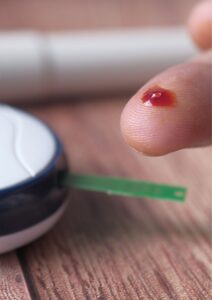Hello there, science enthusiasts!
Let’s delve into the fascinating world of Diabetes Mellitus today. Have you ever wondered how our understanding of diabetes has evolved over the years, or why it’s so important to classify it into different types? Let’s answer these questions together in this blog post, while also sprinkling in some exciting historical trivia. Get ready to embark on a journey from ancient Indian texts to modern scientific classifications!
The Origins and Evolution of Diabetes Classification
Did you know that different types of diabetes were acknowledged in historical Indian texts? Flash forward to the 19th century when a French pharmacist, Apollinaire Bouchardat, laid the foundation for treating obesity-related diabetes with a systematic regimen focusing on weight loss and physical activity. Étienne Lancereaux, another French physician, then took it a step further, classifying diabetes patients as having ‘diabète maigre’ (lean diabetes) or ‘diabète gras’ (fat diabetes).
But, the real game-changer came in 1936 when Harold (Harry) Percival Himsworth linked clinical symptoms with insulin sensitivity, thereby scientifically identifying differences between Type 1 and Type 2 diabetes.
Type 1 Diabetes (T1D) – The Immune Attack
Imagine your immune system turning against you, attacking the very cells that produce insulin in your body. That’s exactly what happens in

T1D. It’s like a civil war in your body, with your immune system acting as a rogue agent, destroying your insulin-producing β-cells.
In 1997, experts from the American Diabetes Association further classified T1D into Type 1A (immune-mediated) and Type 1B (idiopathic or unknown cause), making our understanding of this disease even more nuanced.
And you know what? Your genes play a significant role in this internal war! Certain gene variants, especially in the Human Leukocyte Antigen (HLA) genes, increase your risk of developing T1D. But it’s not just about genes; environmental factors like viral infections and dietary habits also trigger T1D.
Type 2 Diabetes (T2D) – The Sneaky Intruder
T2D is the sly fox of diabetes. It creeps in subtly, often due to ineffective insulin production, insulin resistance, or both. It’s like having a broken lock and key system, where the insulin (key) cannot open the cell’s door to let the sugar in, leading to sustained high blood sugar levels.

Unlike T1D, T2D is closely related to lifestyle factors like obesity, physical inactivity, and genetic predispositions. Some genes, like CAPN10 and TCF7L2, have been linked to T2D risk, revealing the intricate interaction between our genes and environment.
The Emerging Subtypes of Diabetes
Wait, there’s more to diabetes than Type 1 and Type 2? Absolutely! Recent research has discovered several novel subtypes of diabetes, providing a more in-depth understanding of this multifaceted disease. These include severe autoimmune diabetes (SAID), severe insulin-deficient diabetes (SIDD), severe insulin-resistant diabetes (SIRD), obesity-related diabetes (MOD), and mild age-related diabetes (MARD). This new clustering approach allows for personalized treatments and may improve disease outcomes.
The Takeaway
Understanding diabetes isn’t just about differentiating between Type 1 and Type 2. It’s a continually evolving field that gives us a closer look at how our body, genetics, and lifestyle interact in complex ways. So, let’s spread the knowledge, make informed health decisions, and continue this exciting journey.








